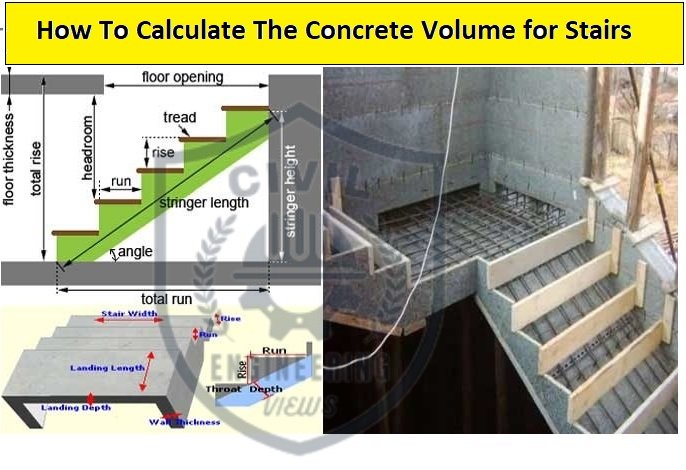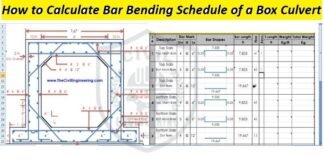Calculate Load And Design Calculation For Column Beam Wall And Slab
The column is the Vertical member of the building or construction. Strength of the any column totally depends on its size and shape and the location, and length of the column. The Beam is the horizontal member of the building or construction. The basic purpose of the beam is to carry the shear force and bending moments and load transfer to the edge and the column. Calculate Load And Design Calculation For Column Beam Wall And Slab. Calculate Load For Column | Calculate Load For Beam | Calculate Load For Wall |Calculate Load For Slab | For The safety Factor Or Extra Added Load |Definition of The Column| Definition of The Beam |Definition of The Slab |Definition of The Wall
Definition of The Column
The column is the Vertical member of the building or construction. Strength of the any column totally depends on its size and shape and the location, and length of the column. The purpose of the column is to transfer load from top to bottom. The column is an important member of the building for construction.
Definition of The Beam
The Beam is the horizontal member of the building or construction. The basic purpose of the beam is to carry the shear force and bending moments and load transfer to the edge and the column. The beam is the location or position on the bottom is the name of the plinth beam and the position between the two columns is the name of the RCC beam and is also given in the slab.
Definition of The Slab
The Slab is the horizontal concrete member of the building or construction. The size of the slab is a minimum of 125mm with the supports of the column and wall. The position of the slab is on the roof on the bottom floor and ceilings. The slab is flat on the top of the column, beam, and wall. The size of the slab is depending on the size of the room or building etc.
Definition of The Wall
The Wall is the vertical member of the building wall and is an important part of the building. Without a wall is not possible to construct the building. Different types of walls according to uses or position parapet wall cross wall partition wall. The thickness of the wall is 9″ and 4.5 “.
Calculate Load And Design Calculation For Column Beam Wall And Slab

Calculate Load For Column
We calculate the load for the column with the help of the self-load of the concrete is approximately 2400kh/m³ which is equal to 240kN. And Self Load of the steel is approximately 8000kg/m³.
Now We calculate the load for a column with the help of some given data.
Bar Bending Schedule For Column
Given Data
Length of the column = 300mm
Width of the column = 450mm
Height of the column = 3000mm=3m
Percentage of the steel = 1%
Self Weight of the column = 1000kg/floor = 10KN
Self Weight of the concrete = 2400kg/m³
Self Weight of the Steel = 8000kg/m³
Solution
Volume of Concrete
Weight of concrete
Weight of Steel with concrete
Total Weight of column
The volume of the concrete = L × W × H
The volume of the concrete = 0.300 × 0.450 × 3 = 0.405m³
The Weight of the Concrete = Volume of concrete × Self Weight
The Weight of the Concrete = 0.405 × 2400 = 97kg
The Weight of the Steel = Volume of concrete × Persentagte of steel × self-weight of the steel
The Weight of the Steel = 0.405 × 0.01 × 8000 = 32.4kg
Total Weight of column = Weight of concrete + weight of steel
Total Weight of column = 97 + 32.4 = 1004.4kg/m = 10.04KN/m
Calculate Load For Beam
The load calculation for the beam is the same step for the column with the help of some given data.
Bar bending Schedule of Plinth Beam
How To Calculate The Concrete Volume for Stairs
Given Data
Depth/thickness of the beam= 350mm Without slab
Width of the beam = 400mm
Length of the beam = 1000mm=1m
Percentage of the steel = 2%
Self Weight of the concrete = 2400kg/m³
Self Weight of the Steel = 8000kg/m³
Solution
Volume of Concrete
Weight of concrete
Weight of Steel with concrete
Total Weight of Beam
The Volume of the concrete = L × W × Thickness
The Volume of the concrete = 1 × 0.400 × 0.350 =0.14m³
The Weight of The Concrete = Volume of concrete × Self Weight of Concrete
The Weight of The Concrete = 0.14 × 2400 = 336kg
The Weight of the steel = weight of concrete × percentage of steel × self-weight of steel
The Weight of the steel = 0.14 × 0.02 × 8000 = 22.40kg
Total Weight of beam = Weight of concrete + weight of steel
Total Weight of beam = 336 + 22.40 = 385kg/m = 3.5KN/m
The self Weigth of the beam will be 3.5kN/ r.m ( R.M = Running Meter)
Calculate Load For Wall
The Load calculation for the wall is very simple. The load calculate for the wall with the help of some given data
Given Data
The Density of bricks =1500 to 2000 kg/m³
The Length of The wall = 1m
The Height of the wall = 2.5m
The thickness of the wall = 9 inches = 0.228m
The Self Load of the wall = 0.225kg/R.M R.M = RUNNING METER
Solution
The volume of the wall = L × H × thickness
The volume of the wall = 1 × 2.5 × 0.228 = 0.57m³
The Load of the wall = self-load of the wall × length × Height × density of a brick
The Load of the wall / running meter = 0.225kg/r.m × 1 × 2.5 × 2000 = 1125kg
For concrete blocks and autoclaves block the weight 550 kg to 700kg / m³
Calculate Load For Slab
The Load calculate for the slab with the help of some given data
Given Data
The Length of the slab = 1000mm=1m
The Widht of the slab = 1000mm = 1m
The thickness of the slab = 125mm = 0.125m
The Self Weight of the concrete = 2400kg/m³
Solution
The Volume of the slab = L × W × Thickness
The Volume of the slab = 1 × 1 × 0.125 =0.125m³
Total Weight of the slab = Length of the slab × Thickness × self-weight of concrete
Total Weight of the slab = 1 × 0.125 × 2400 = 300kg= 3KN
For The safety Factor Or Extra Added Load
When all calculations will be complete they also add some load to the calculation for the safety factor. safety factor means extra load adds for extra precaution to avoid the failure of the building. The safety factor is most important for building design. Value of the safety factor = 1.5
Read More
-
Measurements Of Workability For Fresh Concrete
-
Calculate The Volume of Sand Aggregates In the Dipper Truck
-
Important Fifty Questions For Civil Engineers











